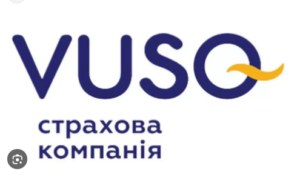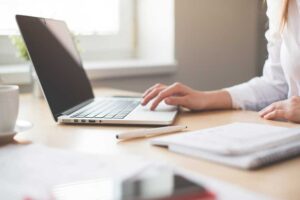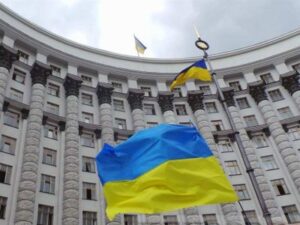
Insurance company Vuso and international insurance broker WTW have developed and started to implement the program of insurance of ground cargo transportation on the territory of Ukraine with coverage against military risks, according to the press release of the insurer.
It is also noted that the established limit of market capacity will provide full protection and support to Ukrainian and foreign enterprises engaged in cargo transportation on the territory of Ukraine. This program is reinsured in the private reinsurance market of Great Britain and Lloyd’s, with participation of leading reinsurers and leadership of Markel syndicate.
The insurance program developed by Vuso and WTW will contribute to the sustainability of the Ukrainian economy, the safety of cargo transportation and guarantee the maximum level of financial support for the insurance company’s clients.
“During wartime, we faced many issues that required consistent solutions. We are glad that WTW Ukraine supported Vuso on this case. The main task for today is to guarantee stability and comfort to our corporate clients regardless of the current events in our country. (…) This capacity will allow us to expand the range of programs for Ukrainian business to protect cargo transportation from military risks”, – says the Chairman of the Board of IC Vuso Andrey Artyukhov.
The project is already realized. You can learn more about the program from representatives of Vuso or WTW Ukraine.
The global consulting, brokerage company Willis Towers Watson (WTW) provides analytical solutions in the field of people, risk and capital. Using the global perspective and local expertise of colleagues operating in 140 countries and markets, it helps organizations develop their strategy, improve organizational resilience, motivate their people and maximize productivity.
VUSO IC was founded in 2001. The company holds 50 licenses: 34 – for voluntary and 16 – for compulsory types of insurance, is represented in all regions of Ukraine. It is a member of ITSBU and UFS, a participant of the Agreement on direct settlement of losses and a member of the Nuclear Insurance Pool.

The Motor (Transport) Insurance Bureau of Ukraine (MTSBU) will hold the first session of the online course “Fundamentals of the New Law on CMTPL Insurance” on May 31 at 10:00, according to the Bureau’s Facebook page.
The session will be conducted by Roman Romensky, Head of the MTSBU Legal Department, who will talk about the basic principles and procedure for concluding insurance contracts in accordance with the basics of the new law (Section I-II of the draft law).
It is specified that participants do not need to register, it is enough to follow the YouTube live link https://www.youtube.com/live/hIQEzWFqQqc.
In connection with the adoption on May 21, 2024 by the Verkhovna Rada of the draft law “On Compulsory Insurance of Civil Liability of Owners of Inland Motor Vehicles” will hold a familiarization course on the main provisions of the bill, according to the website of the Bureau.
The familiarization course will consist of four sessions (by sections of the draft law), which will be held on the official YouTube channel of the MTSBU on Fridays at 10:00, lasting 1 hour 30 minutes, of which 30 minutes will be allocated for answering questions.
The tentative plan of the lectures is as follows: Session 1: Basic fundamentals of the New Law on CMTPL insurance and the procedure for concluding insurance contracts (І-ІІІ section of the draft law), Session 2-3: Settlement of insurance claims and the procedure for making payments (III section of the draft law), Session 4: Updating the functional work of the MTSBU and the basic principles of insurance companies’ membership in the Bureau (IV section of the draft law).

The demand for labor of various professions and qualifications is growing in Kyiv. At the beginning of May, the database of the capital’s employment service contained about 3,000 current vacancies. However, many businesses are experiencing a shortage of skilled workers.
Every fifth vacancy is for professionals: engineers, teachers, analysts and economists. Due to the martial law, there is an increased demand for representatives of blue-collar professions that were previously considered predominantly male: installers, electricians, mechanics, electric and gas welders, seamstresses, building maintenance workers, and painters.
Employers are looking for specialists in various fields: accountants, nurses, educators, electricians, personnel inspectors, and paramedics. Trade and service workers are in demand, including cooks, salespeople, educators’ assistants, and social workers. At the same time, there is a growing demand for unskilled labor, such as cleaners, unskilled laborers, loaders, and kitchen workers.
TOP vacancies with the highest salaries:
– Defense forces: inspectors and police officers of the special police – UAH 126 thousand;
– IT industry: software engineers, software development and testing specialists, software engineers – UAH 110 thousand;
– enterprises with foreign investments: professionals in the organization of protection of information with limited access – 69 thousand UAH, sales managers – 67 thousand UAH, journalists – 54 thousand UAH, editors – 51 thousand UAH, analysts – 50 thousand UAH, psychologists – 47 thousand UAH;
– skilled professionals: public procurement specialists – UAH 45 thousand, chief accountants – UAH 43 thousand, plastic surgeons, carpenters and vehicle drivers – UAH 40 thousand each.
While offering modern competitive salaries, employers also place high demands on the qualifications of candidates. The Kyiv City Employment Service, through employment promotion programs, vocational training and an individual approach, will provide jobs for all job seekers and, if necessary, help them increase their competitiveness in the labor market.

Raiffeisen Bank has started issuing unsecured “green” loans to small businesses for construction solar power plants, as well as for the purchase of electric cars and charging stations to them.
As noted in the bank’s statement on its website on Tuesday, both FLPs and legal entities can obtain financing up to 80% of the cost of the relevant equipment and installation.
Under the terms of lending, the loan amount can be up to UAH 9 million for a period of 24 months. The interest rate is 17-19% per annum, without additional commissions.
“Thanks to the new loan program Raif contributes to decentralization of the energy system, development of electric mobility and ‘green’ recovery of Ukraine. Our business clients can reduce their risks, become energy autonomous, ensure the continuity of their work, reduce the cost of electricity and fuel. Having installed SES for loans from Raif, entrepreneurs will be able to produce “green” electricity for their own business needs, charge electric cars of their enterprises and clients with it, and sell the rest to the energy market, receiving additional income”, – commented Elena Shpirko, Raif’s business banking client segment development manager.
The bank specified that as the largest foreign lender to the Ukrainian economy, it issued UAH 1.5 billion of “green” loans to businesses, including for construction SES, production of solar panels, creation of biogas and biomethane plants, biofuel boilers, implementation of energy efficiency projects, etc.

The European information TV channel Euronews today, May 28, 2024, published an article by the head of state Kasym-Jomart Tokayev. In it, the president of Kazakhstan spoke about the role of middle powers, reports Zakon.kz.
The full translation was distributed by Akorda.
“Countries like Kazakhstan should come forward with new strength and declare their role not only as participants, but also as responsible players in the global arena.
In today’s world, marked by extreme geopolitical turbulence and constant conflicts, the need for multilateral solutions is more urgent than ever.
Wars in Europe, the Middle East and Africa are claiming the lives of hundreds of thousands of people, while climate change is leaving millions hungry, vulnerable and homeless. These conflicts seem intractable, with no hope for improvement. Against this backdrop of global discord, traditional powers – the world’s economic and political giants – are increasingly less able to work together.
The conflict in Ukraine has created a diplomatic stalemate, the ongoing situation in Gaza is a huge humanitarian disaster, and tensions in the Indo-Pacific region are pushing risky actions at the expense of more constructive engagement. Meanwhile, structures established to promote international consensus, such as the United Nations, face paralysis and stalemate.
Middle powers, flexible key players
The veto power held by the permanent members of the UN Security Council often leads to stalemates, preventing decisive action on the global crisis and leading to recurring scenarios where unilateralism (unilateral action) is favored over collective action. This further undermines the spirit of multilateralism (multilateralism) and reduces confidence in international institutions. Against this backdrop, middle powers such as Kazakhstan emerge as key players with growing opportunities to bring about greater stability, peace and development in their regions and beyond.
Unencumbered by the complexities of superpower politics, we have the flexibility to successfully navigate complex diplomatic landscapes and pave the way for compromise and reconciliation. Even without as much global influence as the world’s superpowers, countries like ours have the economic power, military capabilities and, perhaps more importantly, the political will and diplomatic skill necessary to make a significant impact on the global stage on issues of food and energy security, green transition and IT, and supply chain sustainability.
Moreover, middle powers are deeply committed to multilateralism. Unlike superpowers, which may feel constrained by these institutions, charting their own course, our countries depend on these critical global mechanisms to resolve disputes, protect territorial integrity, and address common challenges such as climate change and pandemics.
Agenda: peacemaking and sustainable development
Kazakhstan has always been deeply committed to multilateralism, constantly seeking new venues for international dialog and joint action.
In addition to our ongoing work on nuclear disarmament and non-proliferation, we are actively promoting the establishment of a new multilateral agency focused on biosecurity to prevent the devastating effects of man-made pandemics and bioterrorism on a global scale.
We are also proud to co-chair this year, along with France, the first One Water Summit, which aims to bring together countries and communities around the world facing the challenges of water scarcity and desertification. In addition, we have offered to host the new UN Regional Center for Sustainable Development Goals (SDGs) for Central Asia and Afghanistan to coordinate regional efforts to combat the effects of climate change.
We are also not afraid to offer our assistance in finding solutions to protracted conflicts. This is evidenced by our recent commitment to peace talks between Azerbaijan and Armenia – an effort that underscores our belief in the power of middle powers to advance dialogue and promote peace.
Next year marks the 50th anniversary of the Helsinki Final Act, a valuable opportunity to reflect on the return and resurgence of divisions among the world’s great powers in the post-Cold War era.
More importantly, however, the road to global unity is not off the beaten track – it has been traveled successfully before. The world has overcome differences before and can do so again through diplomacy and dialog.
We must all work together to breathe new life into our world
With the multilateral system under severe strain, it takes countries of all sizes – large, medium and small – to breathe new life into it. However, with the big powers less and less willing to trust the process and the small countries lacking influence, it is the duty of the middle powers to lead the way.
Countries like Kazakhstan must step up and assert their role not only as participants but also as responsible players on the global stage.
At this critical moment, we call on all our international partners to join us in strengthening multilateralism – to revitalize and invest in a global system in which we have achieved much.
Let our collective action reflect our commitment not only to a more peaceful present, but also to a prosperous and harmonious future. The task is difficult, but with determination, leadership and a strong commitment to dialogue, we can turn today’s challenges into tomorrow’s successes. Let us lead the way to an era of multilateral renewal.”
Note that this is not the first article of the leader of Kazakhstan. For example, on September 20, 2023, the American print and online political publication The Hill published an article by Kasym-Jomart Tokayev about the UN.

The Cabinet of Ministers of Ukraine has banned all types of advertising of gambling business, follows from the government decree № 583.
Thus, amendments were made to paragraph 1 of the Cabinet of Ministers Resolution No. 566 of May 17, 2024 “Some issues of counteraction to the negative consequences of the functioning of gambling on the Internet”.
“Subparagraph one after the words ‘order of restriction’ is supplemented with the words ‘of all forms’, and after the words ‘by restriction’ – with the words ‘namely a ban’, – stated in the resolution.
According to the document, the ban will be in force until the entry into force of the law on combating game addiction, which is now under consideration by the Verkhovna Rada.
ADVERTISING, CABINET OF MINISTERS OF UKRAINE, GAMBLING BUSINESS